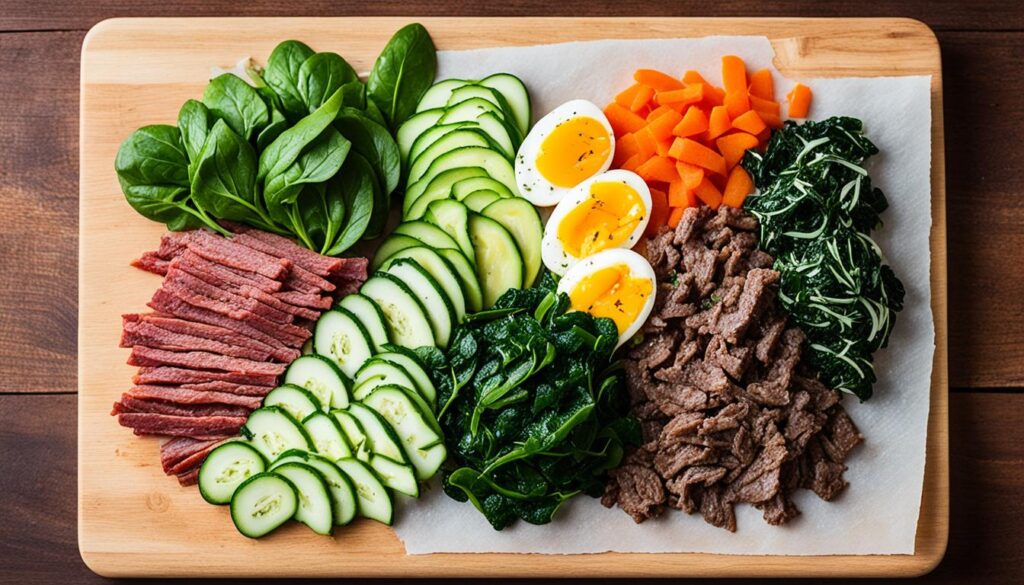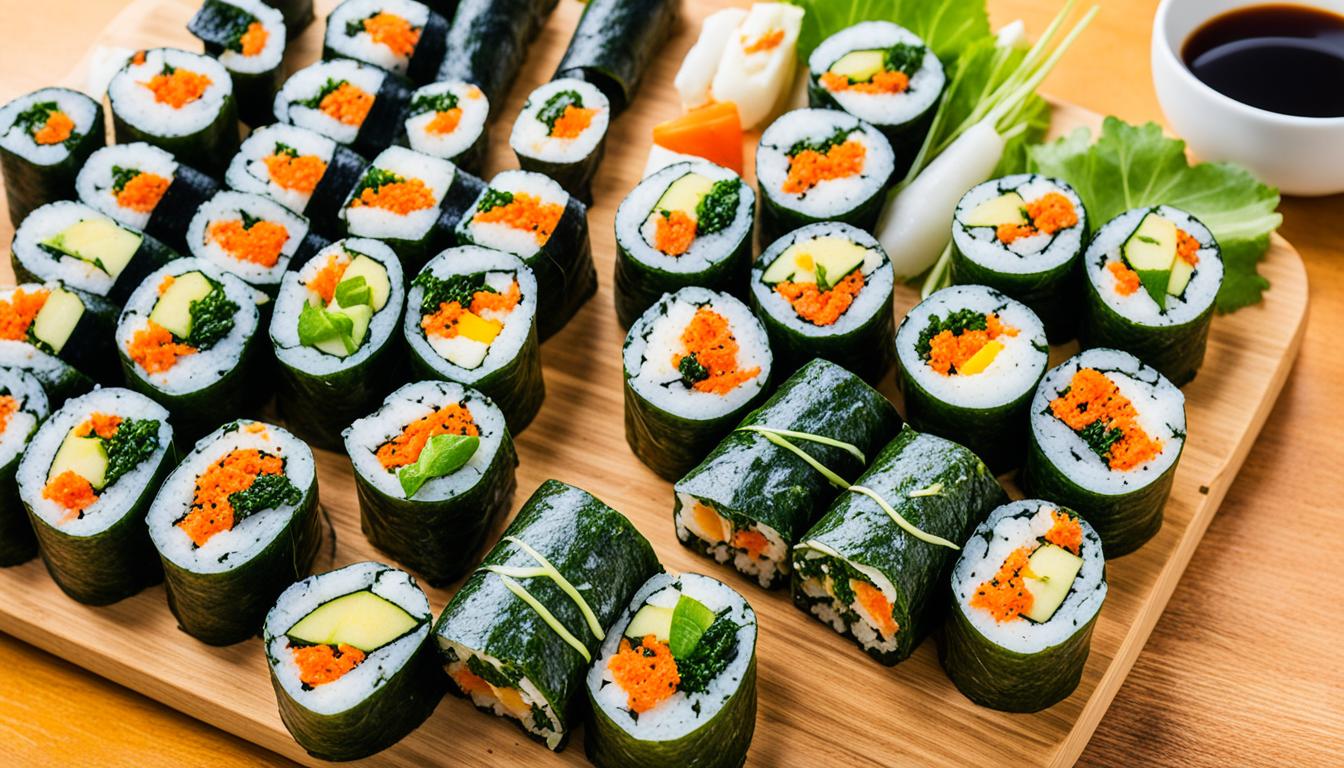Did you know that over 100 million gimbap, the beloved Korean seaweed rice rolls, are consumed in South Korea every day? This traditional Korean dish has become a staple snack and meal-on-the-go, capturing the hearts and taste buds of people around the world. In this article, we’ll provide you with an authentic recipe and step-by-step tutorial to help you recreate the delicious flavors of gimbap korean seaweed rice rolls right in your own kitchen.
Kimbap, also known as gimbap, is a traditional Korean dish that consists of rice, vegetables, and seaweed. This recipe with a step-by-step video tutorial offers an easy way to make the flavorful korean rice roll recipe, perfect for a quick korean street food meal-on-the-go or a delightful korean picnic food experience. Whether you’re a fan of vegetarian gimbap rolls or prefer the classic fillings, our guide will help you master the art of homemade gimbap in no time.
What is Gimbap (Korean Seaweed Rice Rolls)?
Kimbap, also spelled as gimbap, is a popular Korean dish that means “seaweed and rice.” These Korean rice rolls are often enjoyed as a quick meal-on-the-go or snack that you see in many shops around bus or train stations. It involves rolling rice in a seaweed sheet and adding various fillings.
Traditional Korean Dish
Gimbap, or Korean seaweed rice rolls, is a traditional Korean dish that has been enjoyed for generations. It’s a staple in Korean cuisine and a beloved street food that can be found in markets, cafes, and convenience stores across the country.
Portable and Convenient
One of the reasons gimbap is so popular is its portability and convenience. These Korean rice rolls are the perfect on-the-go snack or meal, making them a popular choice for Korean picnic food, school lunches, and quick bites between activities.
Similarities and Differences with Sushi
While gimbap may resemble Japanese sushi, there are some key differences. Unlike sushi, which is made with vinegared rice, gimbap uses a simple seasoned rice. Additionally, the filling options in gimbap tend to be more varied, often including vegetables, meat, or even bibimbap ingredients.
gimbap korean seaweed rice rolls Ingredients and Preparation
When you’re at a Korean grocery store, it’s essential to pick the right type of seaweed sheets for making gimbap. Look for dark, dense, and roasted seaweed sheets, known as Gim (김) or nori sheets. These sheets are the perfect canvas for rolling delicious Korean rice rolls. It’s best to avoid any seaweed sheets that have red or purple spots, as this color change indicates the seaweed is old and might not taste as fresh.
Once you have your dried seaweed sheets, it’s time to prepare the rice. For the best gimbap experience, use short-grain or medium-grain white rice. Cook the rice according to the package instructions, then let it cool slightly before using it to assemble your rolls.
When it comes to the classic filling options for gimbap, the possibilities are endless. Some popular choices include carrot, spinach, pickled radish, bulgogi (marinated beef), tuna, and eggs. Feel free to get creative and experiment with your favorite vegetarian gimbap rolls or Korean street food inspired fillings.

How to Roll and Slice Gimbap Korean Seaweed Rice Rolls
Rolling homemade gimbap might seem tricky at first, especially for beginners, but with a bit of practice, we’ll get the hang of it quickly. The process involves spreading rice evenly on a seaweed sheet, arranging the fillings in the center, and then tightly rolling the sheet around the fillings using a bamboo mat.
Once the gimbap is rolled, we can slice it into bite-sized pieces using a sharp, wet knife. This helps prevent the seaweed from tearing or the filling from spilling out. Serve the sliced gimbap with a side of gimbap sauce for dipping, making it the perfect korean picnic food or portable snack.
With a little bit of practice, we’ll be rolling up delicious and authentic homemade gimbap in no time. The key is to work slowly and carefully, ensuring the rice is evenly distributed and the roll is tightly wrapped. This will result in beautifully presented, flavorful gimbap that’s ready to enjoy anywhere, from a park picnic to a quick lunch on the go.
